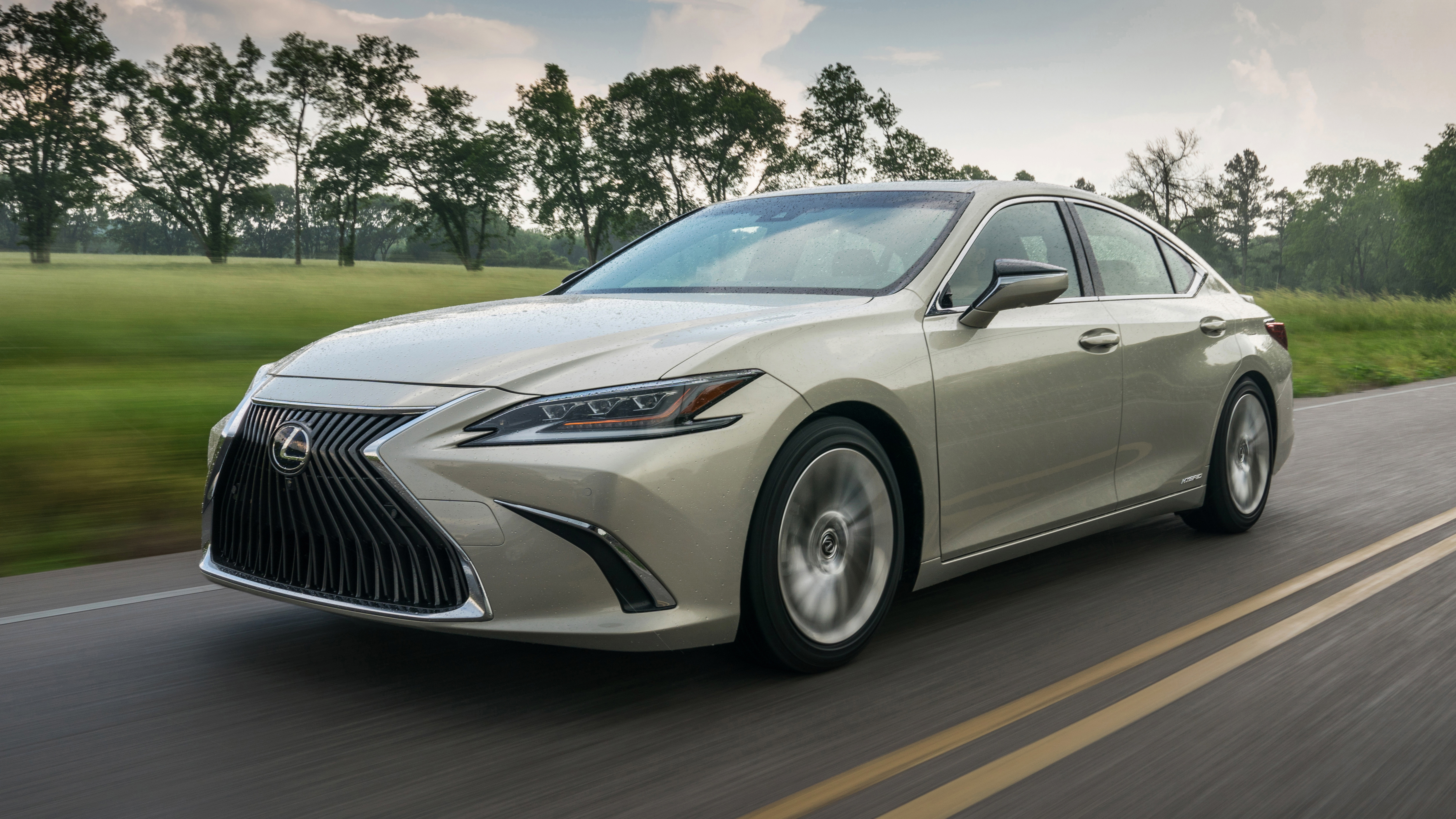
Lexus ES review: first test of UK-bound saloon
What is this?
This is the new shape of Lexus’s executive saloon in Europe. Having tried to woo us with the surprisingly good but largely ignored rear-drive GS saloon, which is now being phased out, the company is switching tack and bringing in the new front-driven ES instead. The model has been a staple in the Lexus range – as a smaller alternative to the LS – in the US and Asia since 1989, but this seventh gen car is now moving to a global model and so will appear in the UK line-up soon.
Front drive, eh?
Yes, front-driven executive cars aren’t the sort of thing to get your pulse racing. But then that’s exactly the point. As per the refreshingly minimalist and hushed Volvo S90, the new ES has been designed to soothe and smooth rather than steer from the rear. It recognises that 99.9 per cent of its time on the road will be either in traffic or on motorways. And that for the 0.1 per cent of time it’s not, the occupants and driver would probably rather take a nap rather than try and spy an apex.
And what about the engines?
No threat to your heart rate here, either. Even though the US versions of the car get a stout 3.5-litre V6 lump, all of the five-trim levels that will be on sale in the UK will be fitted with a 2.5-litre petrol electric hybrid drivetrain mated to a CVT automatic gearbox. Total output is a super conservative 215bhp and 291lb ft of torque. Makes you feel relaxed just reading that, doesn’t it?
No diesels?
None. Lexus parent Toyota has for a long time championed hybrid electric drivetrains over diesels. And it’s a decision that, with all the latest legislation and cheating revelations, now looks like a smart one. The company still takes a conservative approach to the set up, preferring long-term reliability over peak performance. But, in this application at least, it fits the mission of reliable, comfortable performance.
Does it share any parts with other models?
The ES is built on the same (GA-K) platform as the new US best-selling Toyota Camry and Avalon. But it gets a completely higher level of minute attention to detail while it’s being produced in Japan. Instead of just being normally welded and stuck together, the ES’s chassis is, like the LS, also laser screw welded. This, which is described as being like a zip instead of buttons, along with a range of other extra reinforcements, makes the whole car more solid and therefore better handling and hushed.
Top Gear
Newsletter
Thank you for subscribing to our newsletter. Look out for your regular round-up of news, reviews and offers in your inbox.
Get all the latest news, reviews and exclusives, direct to your inbox.
How quiet?
Almost too quiet, according to the Lexus engineers. By the time they had done all the extra work, which includes wheels that hardly resonate and a clever secondary damper in the suspension, the car was so free of noise they actually had to add some back in. Apparently if the noise level drops too much, some people get car sick because they feel too isolated.
What’s it like to drive?
Calm is the first word that springs to mind. And comfortable. But not mushy. The rigid structure gives the steering reasonable feel and faithful accuracy. It has a suitably controlled ride and can be hurried down the road if the need arises. But its sweet spot is cruising between and into towns on A roads. Here, at 80mph, you can have a conversation with any one of your three passengers without going above regular volume. All while doing around 50+mpg.
You can use the paddles to switch between the imaginary gears in the CVTs range, if you must, and it does a reasonable job of pretending to play along, especially in the F Sport model. But it’s best to just dial in your mood and let the car do the rest. Lexus’s instrument layout is improved, but still takes a little getting used to. So business as usual there.
Should I buy one?
This is a moment for you to consider what driving you really do, rather than what you would like to do, but don’t. While TG will go to its grave defending your right to having a drift-worthy V8 that consumes tyres and petrol in equal measure, there are some of us who just want or need to get somewhere in the least stressful way possible. Often with luggage and passengers. For those people, cars like the Volvo S90 and now the new Lexus ES are not just a sensible choice, but the correct one.
Featured

Trending this week
- Car Review
BMW 1 Series
- Top Gear's Top 9
Nine dreadful bits of 'homeware' made by carmakers






